“Sorry, no pad Thai on the menu,” declares a cheeky tote bag from a buzzing Thai restaurant in trendy Talat Noi. Fair enough — we’ve all met that one person who assumes pad Thai (officially phad Thai, if we’re getting scholarly) is the national dish, and therefore every Thai restaurant should serve it.
Newsflash: it’s not. Sure, green curry, tom yam kung, and tom kha kai keep the global Thai-food flame alive from Bangkok to Brooklyn. But beyond those celebrity dishes lies a whole world of flavors worth exploring. So, we asked Thai chefs from MICHELIN-recognized restaurants what they really want you to open your heart — and palate — to on your next trip to the Land of Smiles… or at least your neighborhood Thai joint.
Plus, you’ll get to flex your culinary IQ and officially graduate from phad Thai 101.
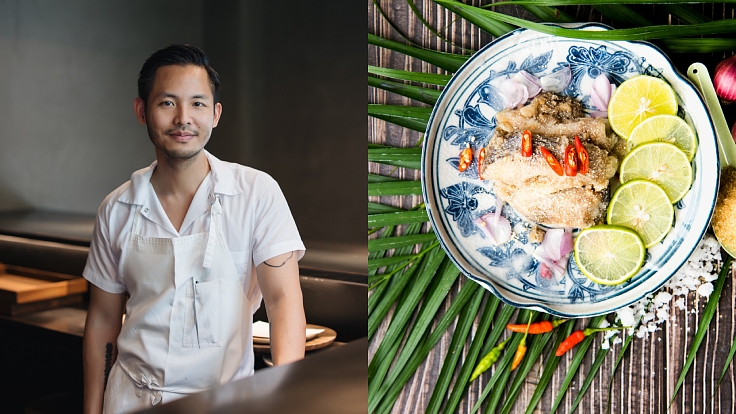
Sareen Rojanametin
Chef-owner, Small Dinner Club (Selected, MICHELIN Guide Thailand 2025)“Definitely pla som — a slow-grilled, fermented sour fish that’s not easy to find. I first tried it when I was a monk in Isan. It’s made by fermenting freshwater fish with salt, brown sugar, sticky rice, and rice-washing water. The result is a little sour, a little salty, fatty, and crisp from the charcoal. Served with fresh salad on top, it’s a simple yet deeply satisfying dish rooted in the farming and working-class traditions of Isan. To me, it’s a technical and ingenious way to preserve abundance — much like methods used in Europe or Japan. I prefer it grilled slowly to get that perfect crust.”
Try pla som here:
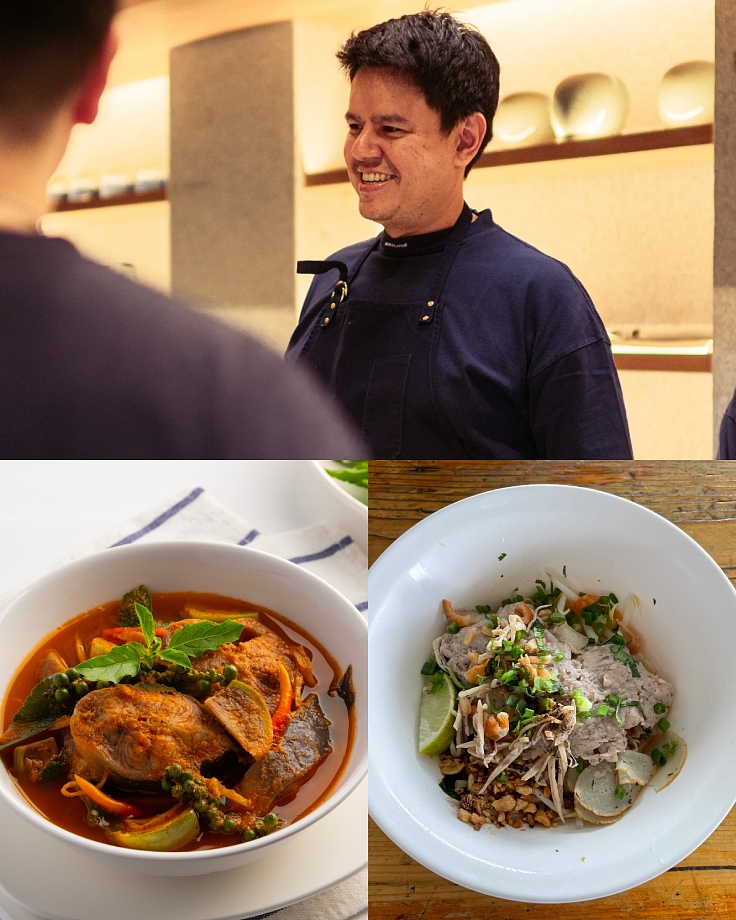
Chalee Kader
Chef-owner, Wana Yook (One MICHELIN Star, MICHELIN Guide Thailand 2025)“Kaeng pa, or jungle curry, is a spicy Thai dish from Central Thailand, particularly forested areas like Ratchaburi and Kanchanaburi. Unlike other Thai curries, it typically doesn’t use coconut milk and is instead packed with aromatic rhizomes, fresh herbs, spices and vegetables. Originally made with game meats or river fish, the dish takes its name from its rustic, jungle-inspired origins and use of foraged ingredients. The result is a bold, aromatic curry celebrated for its intense heat and earthy flavors.
“I also love kuay tiew mu, or pork noodles, which have roots in Teochew Chinese tradition. They’re a cherished part of daily life in Thailand — a quiet comfort, if you will. Locals enjoy them for breakfast, lunch, and dinner, often customizing their bowls with different noodles and seasonings, whether served in soup or dry. Honestly, they’re eaten even more often than phad Thai! My favorite spot? A little place on Sukhumvit 49 — but let’s keep that between us.”
Try kaeng pa here:
Try kuay tiew mu here:
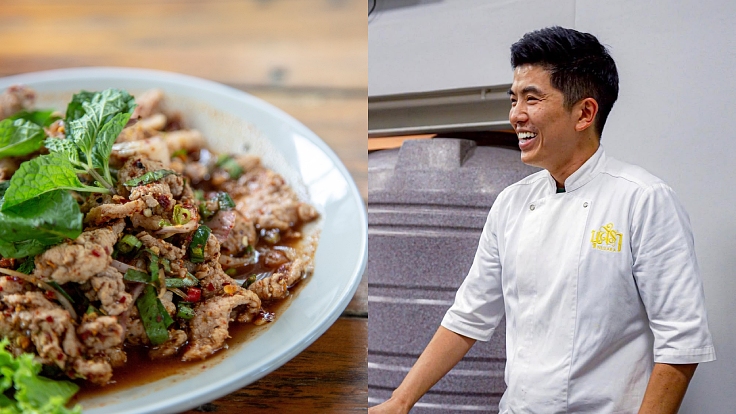
Thitid “Ton” Tassanakajohn
Chef-owner, Le Du (One MICHELIN Star, MICHELIN Guide Thailand 2025)“Lab, to me, is more than just a dish — it’s an edible art form, a cultural heritage passed down from Northern and Northeastern Thailand. It’s a fascinating craft with no right or wrong, only regional differences. For me, it’s quite a primitive, elemental food. If you can taste and truly understand it, you’re more than ready to explore even more exotic dishes from Isan (Northeastern Thailand) and the North.
Try lab here:
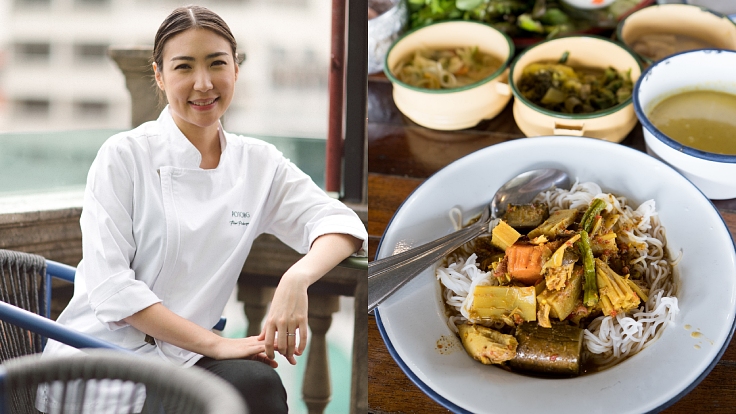
Pichaya “Pam” Soontornyanakij
Chef-owner, Potong (One MICHELIN Star, MICHELIN Guide Thailand 2025)“Kaeng tai pla, or fermented fish entrails curry, is one of the boldest dishes in Thai cuisine, originating from Southern Thailand. Its base is made from fermented fish innards — which might sound intimidating, but that’s exactly what makes the dish so powerful and unique. It reflects how Thai cuisine was shaped by necessity, resourcefulness and deep respect for ingredients. Every bite tells the story of southern communities that live by the sea, rely on fishing and turn preservation into flavor. I recommend travelers try kaeng tai pla because it carries this cultural memory — it’s not just food, it’s history in a bowl!”
Try kaeng tai pla here:
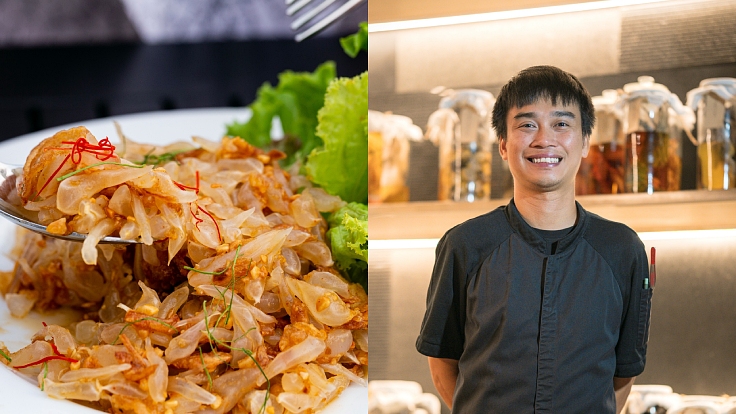
Chalermwut “Nui” Srivorakul
Head chef, Jaras (Selected, MICHELIN Guide Thailand 2025)“For me, the pomelo salad or yam som o perfectly captures Thai flavors — a balance of care, freshness, and creativity. The sweet-tart pomelo, lightly tossed with toasted coconut, shallots, herbs, and peanuts, creates harmony in every bite. It’s refreshing, vibrant, and a great introduction to Thai cuisine — especially on a hot day. Swap in seasonal fruits if you like; it’s simple, fun, and full of local spirit.”
Try yam som o here:
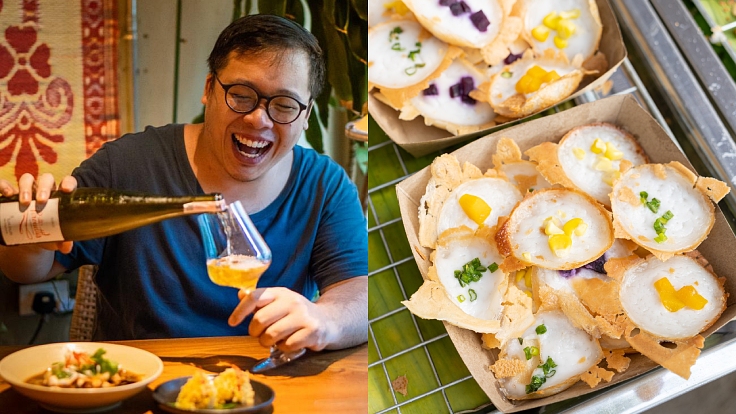
Aruss “Jai” Lerlerstkull
Chef-owner, Charmgang (Bib Gourmand, MICHELIN Guide Thailand 2025)“For me, it’s khanom krok. The coconut-rice pancakes are an old Thai snack that comes in both sweet and savory versions, though today you mostly see the sweet kind topped with corn or spring onions. At Charmgang, however, we reimagine the traditional savory khanom krok — once made with toppings like shrimp, crab, pork, or curry — into something modern. We serve khanom krok with scallops and chili-vinegar sauce, while special occasions might feature creative versions such as chicken liver khanom krok with stir-fried chives or even one topped with lobster curry. Everyone should definitely try it.”
Try khanom khrok here:
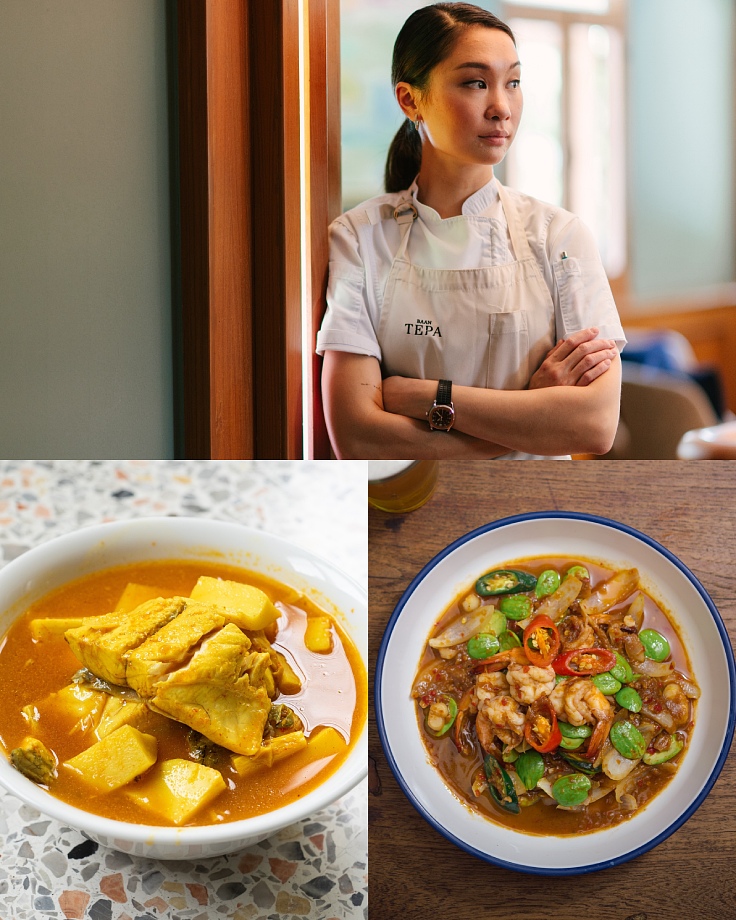
Chudaree “Tam” Debhakam
Chef-owner, Baan Tepa (Two MICHELIN Stars, MICHELIN Guide Thailand 2025)“I love kaeng som or yellow curry with fish roe and green papaya. People should try this because it’s such a distinctive dish of the southern part of Thailand. It’s one of those dishes where you can taste all of the ingredients inside, the complexity of the curry paste, the funk and umami from the kapi (shrimp paste), and the quality of the cooking of the ingredients inside make a huge difference to the final dish. And the sourness that can come from tamarind, garcinia or sour leaves (tamarind leaf usually) is so unique and speaks volumes about the diversity of Thai ingredients.
“Another dish I think everyone should try is sataw phad kapi — stir-fried sataw beans with shrimp paste. It’s one of those love-it-or-hate-it ingredients, but if you can embrace the funk, it’s truly awesome. The texture is so fun to eat, and the nuttiness of the stinky bean paired with a well-made kapi takes it to another level!”
Try kaeng som here:
Try sataw phad kapi here:
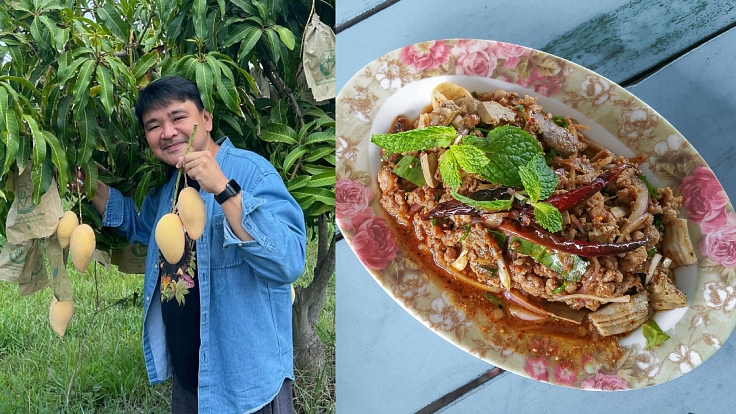
Paisarn Cheewinsiriwat
Chef-owner, Kaen (Selected, MICHELIN Guide Thailand 2025)“I think lab ped — spicy duck salad — really captures the soul of Northeastern Thailand, or Isan. What makes it special is the duck itself, plus all the good bits like liver, intestines and gizzard. At Kaen, we even throw in some crispy duck skin, which adds that extra richness and aroma that sets it apart from your usual pork or beef versions. It’s got this perfect balance, you know, the heat from roasted chili, the nuttiness of toasted rice and the freshness from herbs like mint, scallions and Vietnamese coriander. The flavors are spicy, aromatic, rich and refreshing all at once. It’s bold, it’s authentic, and honestly, it’s one of those dishes you’ve just got to try.”
Try lab ped here:



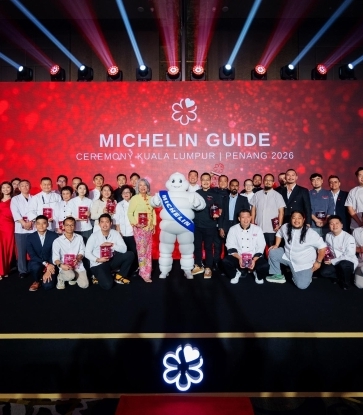
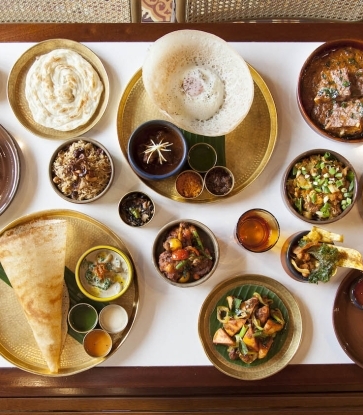
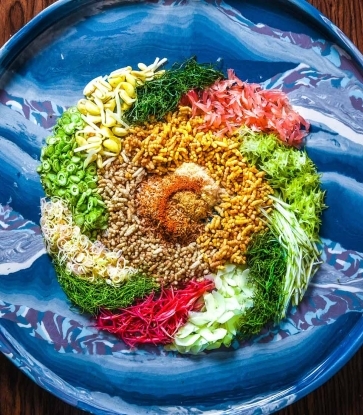
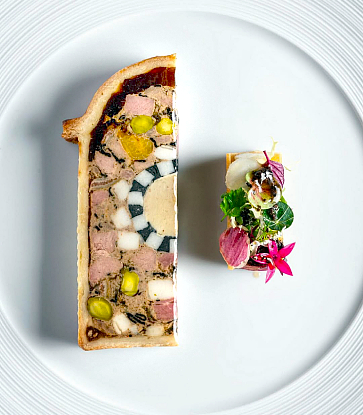
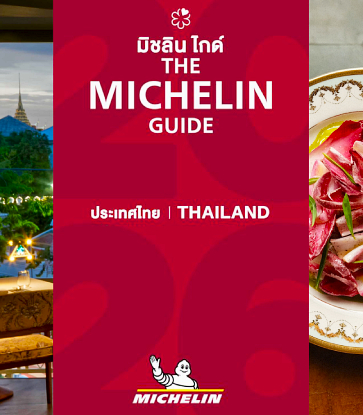
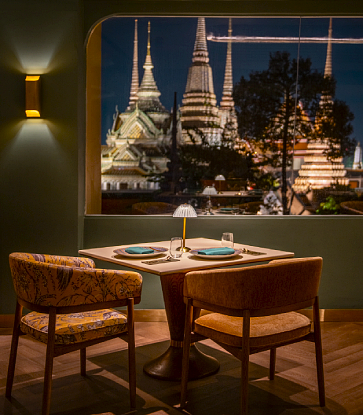
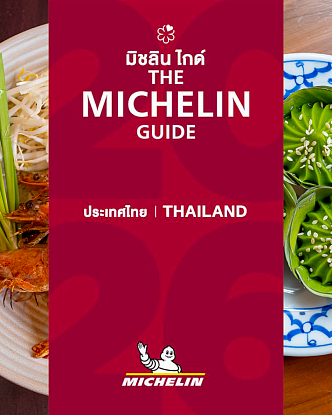

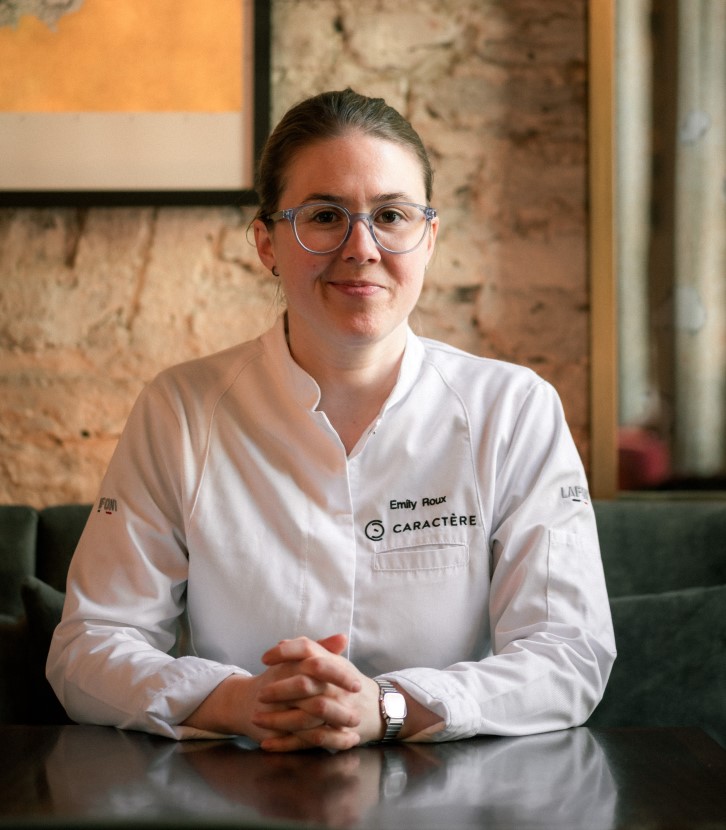

%20-%20Aman%20Nai%20Lert.jpg)
.jpg)
